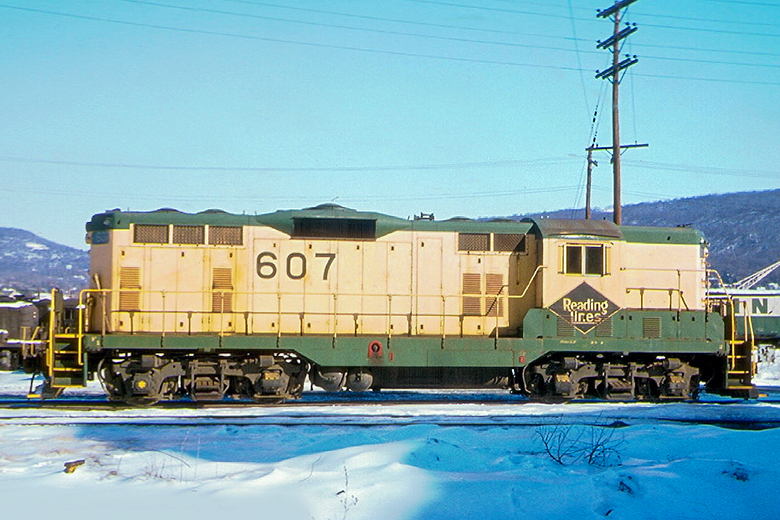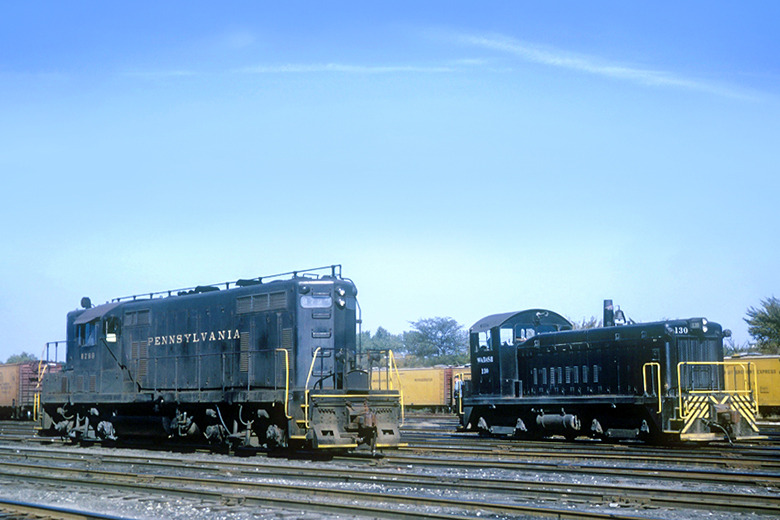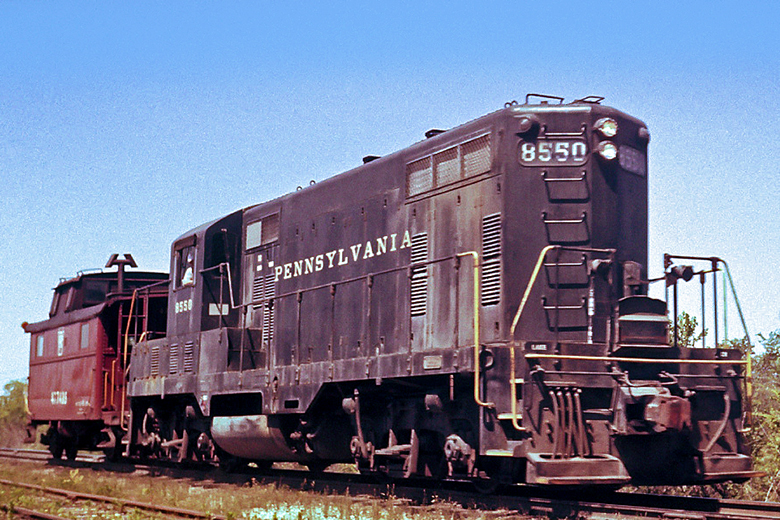Brief history.
In October 1949, EMD introduced the GP7. The GP7 was powered by a 16-cylinder, 1,500 horsepower 567B diesel engine driving a D12 generator, which powered four D27 traction motors, exactly like the F7. The basic design, like almost all road switchers, followed the design of diesel switchers with the addition of a short hood instead of an end-cab. EMD also made the hoods full height to better accommodate the diesel engine and all of the mechanical and electrical components of a road engine.
The first versions of the GP7 were more switchers than road units as they came with smaller fuel tanks and were not equipped with dynamic brakes. In 1951, the second version was introduced with options like several sizes of fuel tanks, dynamic brakes, and steam generators. Fuel tank sizes included 800 gallon, 1,200 gallon, and 1,600 gallon tanks. When water tanks to supply the steam generators were added, there were options for tanks for 800 gallons of fuel and 800 gallons of water or for 1,100 gallons of each. These larger tanks required moving the air reservoirs to the roof to provide space for the tanks. These units became known as “torpedo boats.” Early GP7s had taller engine doors. On the Phase 2 engines with dynamic brakes, the doors under the dynamic brakes were shortened by four inches, leaving one tall door in front of the dynamic brakes. The Phase 3 engines used the shorter doors for all of the engine access doors regardless of dynamic brakes. Another variation was the cabless GP7B built for Santa Fe.
GP7 production lasted from October 1949 until May 1954. There were 2,615 GP7s built for U.S. railroads, 112 for Canada, and 2 for Mexico. Major buyers of the GP7 were Santa Fe (244 GP7 and 5 GP7Bs), New York Central (218), Missouri Pacific (208), Chesapeake & Ohio (180) and Atlantic Coast Line (154). Other roads buying more than 100 units included Frisco (129), Seaboard Air Line (123), Chicago & Northwestern (121) and Rock Island (113).
GP7 production lasted from October 1949 until May 1954. There were 2,615 GP7s built for U.S. railroads, 112 for Canada, and 2 for Mexico. Major buyers of the GP7 were Santa Fe (244 GP7 and 5 GP7Bs), New York Central (218), Missouri Pacific (208), Chesapeake & Ohio (180) and Atlantic Coast Line (154). Other roads buying more than 100 units included Frisco (129), Seaboard Air Line (123), Chicago & Northwestern (121) and Rock Island (113).

Specifications / Technical data
Builder: Electro Motive Division
Wheels: B-B
Gauge: 4 ft 8,5 in
Loco weight: 246.000 lb
Lenght: 56 ft 2 in
Engine power: Diesel
Prime mover: EMD 567B
Horsepower: 1.500 Hp
Speed: 65 mph
Build date: 1949-1954
Units built: 2.729
Units in PRR roster: 66 (ES15m class)

EMD GP7 #607 Reading Lines

EMD GP7 #8799 Pennsylvania Railroad (ES15m class)
Pennsylvania Railroad numer GP7 #8550.
General-purpose road-switcher for freight and passenger services, the GP7 has been the first diesel locomotives developed by EMD with this design (NO cab diesel). The prototype No.8550 was acquired by PRR in 1953. The GP7 serve the "the standard railroad of the world" since 1951. Of this model, 66 engines were purchased, all belong to the first series. Used essentially for carrying out short regional trains, the GP7 was also excellent for yard operations.
EMD GP7 Pennsylvania Railroad #8550 data
Road Number: 8550
Class: ES15m
Model: GP7
Built: 1953
Year on Roster: 1953
Builder: EMD
Horsepower: 1.500
Notes: No trainphone
Assignment 1956: Central Region / Susquehanna Division

EMD GP7 #8550 Pennsylvania Railroad (ES15m class)

EMD GP7 #8550 Pennsylvania Railroad (ES15m class)
ATHEARN GENESIS EMD GP7 Pennsylvania Railroad (ES15m class) #8550.
Athearn reproduce this engine in perfect way, equipped with a Tsunami digital sound decoder. The only parts to be added are the sunshades (no trainphone antenna available as the real prototype). The model of AT Collection has been improved with new led lights (frontal and rear) and custom weathered.
